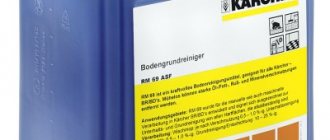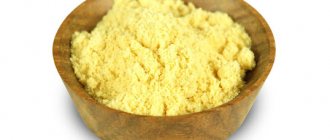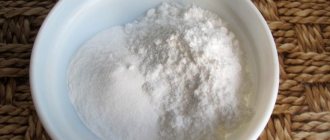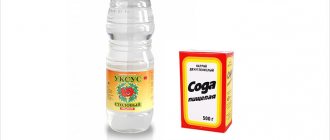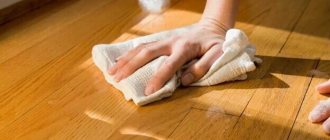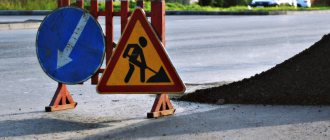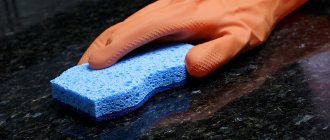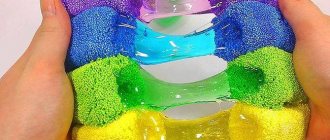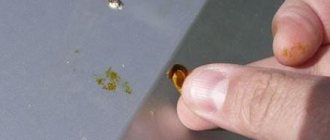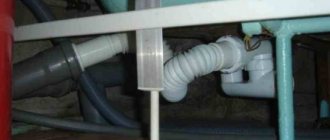How to clean soot from brick
Dealing with soot can cause a lot of trouble for an unprepared person, and those cleaning methods that are used for ordinary pollution may not only not help, but even worsen the situation. Therefore, in this article we will tell you how to remove soot from brick most effectively.
Soot settles very easily on brick surfaces, which makes the cleaning process even more difficult. Therefore, the most effective way would be to purchase special chemicals. Since they are sold as a concentration, this will give you some flexibility when working. The more sediment there is after a fire, the less water needs to be used when diluting with concentrate.
Cleaning masonry with vinegar
A folk remedy such as vinegar will help remove soot from bricks. In this case, working with it will be extremely simple, since you will not need to prepare a special solution. To get rid of soot, you should moisten the wall with a damp sponge, and then apply pure vinegar to it. The vinegar must be given time to act, so after about 20-30 minutes the soot can be cleaned off using the same nylon brush.
Vinegar has an excellent analogue - ammonia, which also works well on the dirty surface of a brick wall. It cannot be used undiluted, ½ tbsp. A bucket of water will be enough.
After treating with ammonia, the brick wall must be thoroughly rinsed, otherwise the unpleasant odor will not fade for a long time.
After vinegar and ammonia treatment, the room must be ventilated, since the vapors of these substances can negatively affect the health of residents.
Before cleaning soot from bricks, you need to take care of your own safety
At a minimum, you need to purchase a gauze bandage, but we recommend using a respirator. The thing is that soot particles can enter the lungs during the cleaning procedure, which can lead to serious and adverse consequences. Important attention should be paid to clothing. Soot is very difficult to wipe off from fabrics, and it is very easy to get dirty while cleaning surfaces, so it is best to use clothes that you won’t mind throwing away. Be sure to use gloves, especially when it comes to chemical methods of dealing with precipitation.
How to remove soot from bricks if there are no specialized chemicals?
As an alternative, a product for washing bathtubs, tiles, etc. is well suited. Their foamy structure will effectively resist precipitation after a fire. After applying the foam to the contaminated area, you need to wait 30 to 60 seconds, then take a rag or regular dishwashing sponge and carefully remove the foamed layer of the substance from the brick base. It is very important that the movements are really careful, otherwise you risk rubbing more soot into the base of the brick. Therefore, if you use a sponge, it is better to use the softest surface. You need to scrub along the surface, without pressing on it.
If it is not possible to completely wipe off the surface, then the remaining stains are best removed with a vinegar solution. It is also best to use a soft sponge or small cloth when cleaning. Another universal and effective method is to mix salt and soap in equal proportions, and dilute it all with water. The result should be a mixture that will be somewhat similar in consistency to a paste. The resulting mixture should be applied in a small layer to the remaining areas, and then allowed to soak for 10 minutes. After this, you can wash the mixture with a brush or rag. We looked at proven methods for cleaning soot from bricks , but the most effective method will still be the one using specialized chemicals, so we will recommend it as the highest priority.
Source
Anti-pollution vacuum cleaner on a brick wall
It’s worth mentioning right away that a regular vacuum cleaner is not suitable for this method. You will need a detergent here. This cleaning method will resemble the traditional one, only a vacuum cleaner in this case will replace the nylon brush. First, you will need to moisten the contaminated area, apply a paste of powder, salt and water to it, leaving it all for 15-20 minutes. After time, the dirty foam is removed using a vacuum cleaner.
For cleaning to be effective, two conditions must be taken into account:
- before using the vacuum cleaner, you will need to change into special clothes, since the work itself will be quite dirty;
- This cleaning method is not suitable for old brickwork, since jets of water will simply destroy it.
How to clean soot from brick
Black streaks of soot on a brick can be the result of a fire or burning of solid fuel in a fireplace or stove.
How to clean soot from brick, especially if you want to restore the beauty of your fireplace?
In general, soot, as a combustion product, does not bother anyone. But there is more dust and dirt in the room.
The soot is absorbed into the pores of the brick and over time these black stains cannot be removed by anything. You will only have to paint over or whitewash the brick to improve the overall appearance of the brickwork.
To avoid unnecessary repair costs, you need to periodically decide how to clean soot from brick.
Specialist advises
- Soot on bricks can be cleaned off with sandpaper, a stiff brush, or a grinding machine. It should be taken into account that soot also settles at the joints between bricks. Removing such pollution is much more difficult. Mechanical stress can disrupt the density of the brickwork. If soot appears regularly on the brick, you should think about drafting the stove or fireplace, cleaning it from soot, or even redoing the chimney.
- Soot is washed off the brick with water, but only partially. The soot that has already been “ingrained” into the brick remains in its place. How to clean soot from brick without wasting time and effort?
- Manufacturers of chemical products have taken care of those who are trying to clean up their home and prevent their fireplaces and stoves from getting dirty. For real owners, a special chemical is offered that removes all soot accumulation on the brick.
How does a special wash work?
The special remover contains surfactants (surfactants) that destroy the carbon compounds that make up the soot.
- The remover is applied to the stained areas in a convenient way: with a brush, roller, or spray. The main thing is that the product completely covers the smoked brick.
- Do not allow the product to dry on the surface. The instructions on the package indicate the duration of action of the product.
- The exfoliated soot is washed off with plain water. If the area of contamination is small, then a basin of water and a brush is sufficient. For large areas, use a water hose.
- It is possible to re-treat the brickwork if the soot remains in the recesses and cracks.
How to clean soot from bricks?
The rough surface of the brickwork allows soot to settle on its surface. The more it eats away, the greater the arsenal of means needed to combat it. Using the following products helps remove soot from bricks:
- wet cleaning;
- household chemicals;
- vacuum cleaner;
- solutions with vinegar and soda;
- special anti-soot products.
Before using any product, including chemicals, it is advisable to protect yourself from fumes using a respirator. Soot is difficult to remove from clothes, so you should wear something dark that you don’t mind throwing away. To avoid getting a chemical burn to the skin when washing bricks, cleaning operations are carried out only with gloves. Before cleaning, it is recommended to cover the floor near the fireplace with linen, film or newspaper, as the floor covering can be damaged.
Washing with water and vacuuming
To remove soot from a brick, you need to take a sponge and a bucket of water. For slightly dirty surfaces, the use of aggressive chemical detergents is not required. The soot cannot be washed off with clean water, so you need to use washing powder or dishwashing detergent. The sponge is moistened in water, wrung out, the required amount of cleaning agent is collected and applied to the contaminated surface of the brick. For better impact, leave the foam for a few minutes and then rinse off. It is advisable to remove the cleaning agent from the wall with a brush to remove soot from hard-to-reach places. A vacuum cleaner can help remove soot from bricks, but not an ordinary one, but a washing one. The process is no different from regular washing, but in this case the contaminated foam is removed with a vacuum cleaner. Cleaning in this way is not recommended for old brick walls, since water contributes to their destruction.
The brick should be wiped only strictly from top to bottom.
Recipe with soda
It’s easy to make your own detergent using washing powder and baking soda. The amount of ingredients is calculated depending on the degree of contamination of the brick surface. The mixture is diluted with a small amount of water to a thick paste. It is used to remove residual dirt from bricks if regular washing does not help. The paste is applied to the brick for 10 minutes and then scraped off with a brush; it is advisable to rinse off the remaining powder with warm water. There is another option for soda without using powder. For this, 2 tbsp. l. soda is diluted with 2 glasses of water and applied to the stain. Vinegar will help enhance the effect of the mixture with soda. After cleaning with soda, it is recommended to wipe the brick with a damp sponge and then apply vinegar to it. After 20-30 minutes, the soot can be washed off with a brush.
Special detergents
The composition of such chemicals was developed to remove soot and soot. They are mainly used and recommended by employees of cleaning companies when it becomes necessary to clean a fireplace or stove chimney from soot. They are sold in small stores; it is not necessary to go to construction or hardware hypermarkets. Effective means to remove soot from bricks are the following:
Cleaning products are available in powder form, which must be diluted in the standard proportion for all: 0.5 cups per 3 liters of water. The finished solution is applied to the brick surface with a brush, left for a few minutes to act and washed thoroughly with warm water. It is recommended to wash the brickwork at least once every 4 months and not to let it become heavily soiled, as this will significantly complicate the cleaning procedure.
Source
Wet cleaning method
How to clean soot from a brick? Cleaning a fireplace in a wooden house is the simplest and most common method; you don’t have to do any special effort during the work. First you need to prepare all the necessary tools and cleaning products. Next you need to proceed as follows:
For cleaning, you can use a mixture of powder and salt.
- The floor around the fireplace or stove must be covered with a special film or newspapers, in this case the soot will not stain the floor covering.
- Next, you should prepare a special mixture for washing the brick. To do this, you need to take regular washing powder and salt. The amount of cleaning products is determined by the degree of contamination or the size of the masonry. Usually take no more than 30 g of salt and add water in such an amount to form a thick paste.
- To make it more convenient to handle a contaminated surface, you need a sponge. It is moistened in water and used to clean the surface. It must be remembered that the brick must be wetted from top to bottom.
- The prepared cleaning agent is whipped until foamy and then applied to the wet masonry. The product is left on the wall for 15-20 minutes. The exposure time is determined by the degree of blackening of the foam.
- To rinse off, you will need a brush; with its help it will be more convenient to remove all the soot, provided that the contamination was not too advanced.
This method is suitable for traditional cleaning and may not be useful in cases of heavy contamination. Then the procedure can be repeated, but it is best to carry it out using more effective methods.
How to clean soot and soot from bricks at home
Good afternoon, my readers are in touch
Zakharov Stove Makers Craftsmen!
With regular heating of the stove, it is impossible to avoid soot deposits on the stove walls. Most often, all this happens unnoticed from the very beginning. However, soot must be removed as quickly as possible. There are several methods to easily do this.
- The easiest way, of course, is to simply wash this wall. Mix 30 grams of salt and washing powder and add water, mixing it all to a paste. The oven wall is moistened with water and then the prepared mixture is applied to a sponge. They begin to apply foam with this sponge from above and carefully work their way down. The mixture is left for a quarter of an hour and then washed off.
There is another option using vinegar (by the way, when working with it you must use a protective mask and rubber gloves). The stove masonry is moistened with water and acetic acid is immediately applied to it undiluted. Within half an hour it will eat away soot and soot. Then you just need to clean it off with a still stiff wire brush.
- You can use ammonia according to the same principle. But in its pure form it has a killer smell, so it needs to be diluted. Half a glass of this substance per bucket of water will be quite enough. As for the cleaning process itself, it is no different from the method described above with pure vinegar. True, after removing the ammonia, the brickwork will have to be washed again to remove the corrosive odor of the substance.
In hardware stores you can now buy special chemicals for removing soot and soot. Usually, about half a glass of these drugs is diluted in 3 liters of water and the wall is treated with this solution. After this, the remaining chemicals along with the soot are washed off with heated water. When using these products, you must use personal protective equipment.
The described methods can reliably protect brickwork from soot and soot. The main thing is to repeat the procedure at least once every three to four months, because old stains are even more difficult to remove.
We bring warmth and bright emotions to your Home!
If it was useful
, please like it, this is the best reward for us.
Be sure to write your
opinion in the comments, it’s important to us.
Subscribe to my channel, they tell the truth here!
Source
Cleaning methods and technology
There are several ways to remove various types of contaminants from the surface of a brick wall:
- use of high pressure water jet;
- sandblasting cleaning method;
- a mechanical method of cleaning a brick wall using hand tools and devices;
- elimination of complex contaminants using chemicals.
In some cases, the combined use of several of these options is required to optimize work. This is especially true if you have to solve the problem of how to clean old bricks from mortar for recycling.
Features of using a high pressure water jet
Using this technology, it is easy to remove salt formations and other simple stains on the surface of a brick wall. The object is cleaned due to high pressure when supplying the substance, which is regulated in the range from 15 to 220 bar. When choosing how to clean facing bricks, you should take into account that using a pressurized water jet to ensure the aesthetic appearance of the masonry gives good results. Among the advantages of the technology, they also note a gentle effect that does not damage the surface of the material, and environmental friendliness.
Cleaning bricks using a high pressure water jet
Sandblasting method for removing mortar and other formations
Using hardware technology, a number of contaminants are effectively eliminated, including traces of fuel oil, old paint, splashes of cement and bitumen, corrosion and mold. Using a sandblasting device, high pressure is created when supplying an abrasive composition, under the influence of which it is easy to rid the surface of unwanted formations.
Sandblasting method for removing mortar and other formations
Mechanical method of removing contaminants
This technique is in demand when eliminating fossilized compounds on the surface of bricks in the form of smudges of building mixture and other solid compounds. The technology involves the use of a conventional set of tools for manually chipping dried pieces of mortar. Next, the remaining composition is cleaned off with coarse sandpaper. At the final stage, the surface is washed with water from a hose.
Chemical method: how to clean facing bricks from mortar
To remove complex contaminants, it is important to use special chemicals. They are used in cases where mechanical action on the surface is accompanied by a risk of damage to masonry elements. Solvents are based on acids such as sulfuric, phosphoric and hydrochloric. These substances with an aggressive composition will help in eliminating solid masses on ceramic bricks. It is worth remembering that chemical cleaning is not suitable for silicate stone, since this material is destroyed under the influence of an acidic environment.
If you plan to eliminate dried mortar mechanically, you should know that it is impossible to clean ceramic and sand-lime brick using the same technology. This is explained by the fact that on silicate building materials, the cement composition holds very tightly in comparison with the ceramic base. Hardened mortar stains on red brick can be easily removed using a simple arsenal of a scraper, chisel and hammer. To rid a silicate stone wall of fossilized pieces of the building mixture, you will have to use household power tools and put a lot of effort into achieving positive results.
To remove complex contaminants, it is important to use special chemicals
